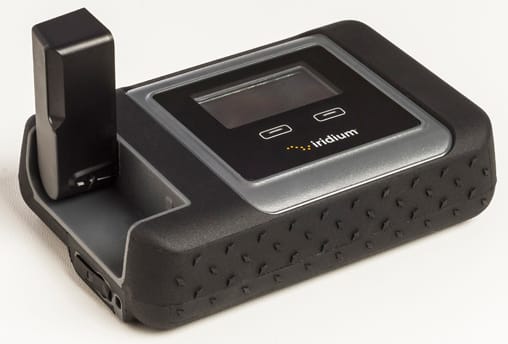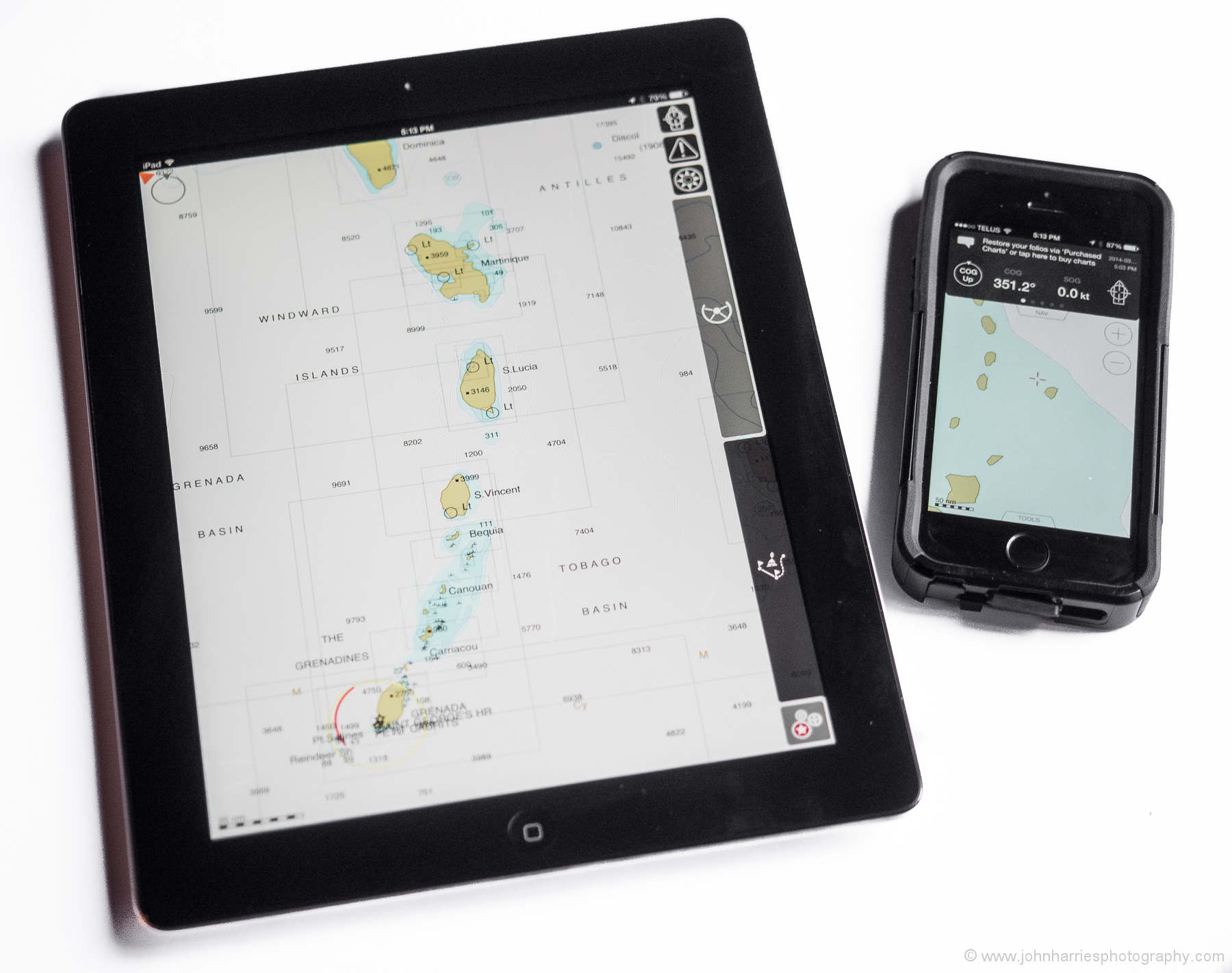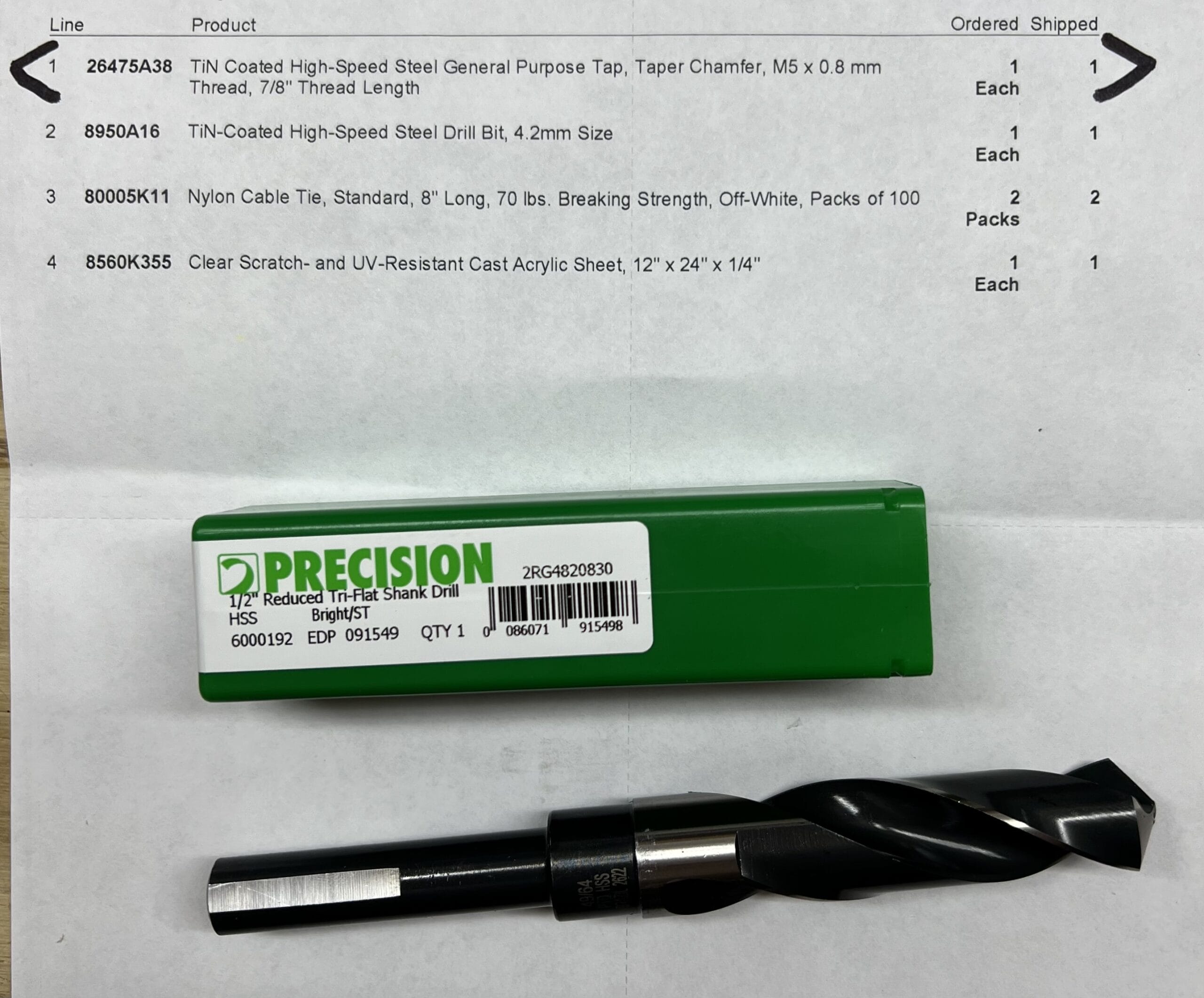
Tips, Tricks & Thoughts:
Tips
-
When Did Your Steering Last Feel The Love?
0 CommentsReading Time: < 1 minuteFreeRead more: When Did Your Steering Last Feel The Love?I’m just about finished rebuilding the steering gear, less the rudder since we did that last year, on our new to-us J/109. When I pulled it apart half the bearings fell out and there was not a drop of grease or oil on any of it…except the brake pad, where we don’t want it! I’m […]
-
Installing a Propane Detector
18 CommentsReading Time: 2 minutesFreeRead more: Installing a Propane Detectori just finished installing a propane gas detector with two sensors, one near the stove and the other just aft of the engine where gas would pool prior to kaboom, on our new-to-us J/109. I settled on the above-pictured unit from BEP Marine. So far it seems like a well-thought-out piece of safety gear. One […]
-
Q & A: Iridium Go! or Go Exec
5 CommentsReading Time: 2 minutesFreeRead more: Q & A: Iridium Go! or Go ExecThe new Predict Wind Iridium Go Exec device does indeed have a subscription plan that limits data according to how much one pays, i.e: $159.95/month buys you only 50MB of data. That includes all data transfer including tracking data. Do you happen to have a clue how much data you found that you used, on […]
-
Good Wire Cutters
1 CommentReading Time: < 1 minuteFreeRead more: Good Wire CuttersNormally I’m reasonably good at keeping track of my tools, but there is an exception: Every few years I lose my wire (diagonal) cutters—I’m not talking misplaced, but rather gone forever. How this happens, particularly on a small boat like our new-to-us J/109, is beyond me, but nonetheless it’s true. In the past I have […]
-
Dive Weights Are Useful In The Workshop
2 CommentsReading Time: < 1 minuteFreeRead more: Dive Weights Are Useful In The WorkshopIt’s amazing how often I use the stack of dive weights I needed to get neutral when wearing my Arctic-level dry suit, (bought when we were cruising the high latitudes) to hold stuff down or together while glue is kicking off. In the photo above the weights were invaluable while I was splatting¹ new TreadMaster […]
-
Winch-Cleaning Solvent
5 CommentsReading Time: < 1 minuteFreeRead more: Winch-Cleaning SolventI have always cleaned winches with kerosene, but I hate the smell and I’m guessing that breathing the vapours for hours is not good for us. So last winter I tried this water-based degreaser from WD-40, even though I don’t like or use their spray lubricant. The stuff really works. After a good soak the […]
-
Check For Correct Winch Pawl Springs
4 CommentsReading Time: < 1 minuteFreeRead more: Check For Correct Winch Pawl SpringsWe have to check everything on a new-to-us boat. The top spring is for Lewmar, the bottom for Harken. All of our Harken winches had a mix of both. Trust no one, least of all boatyards who will often use whatever is to hand. Would the wrong spring cause the winch to slip? Probably not, […]
-
Credit Where It’s Due: McMaster-Carr
3 CommentsReading Time: < 1 minuteFreeRead more: Credit Where It’s Due: McMaster-CarrPhyllis and I have been buying tools, fastenings, and half a hundred other things from McMaster Carr for decades, and are such fans that I often say that if the company goes out of business I’m selling our boat and taking up golf…and I hate golf. Over all those years, and hundreds of orders, I […]
-
Gel Batteries a Winner?
18 CommentsReading Time: < 1 minuteFreeRead more: Gel Batteries a Winner?While researching for an upcoming article I noticed something interesting: Victron rate their Long Life Gel batteries at 2500 50% cycles, as against their AGM Super Cycle Battery at 1000 cycles, and not a lot less than their much more expensive lithium batteries at 3000 cycles. Could it be that the pivot away from gel […]
-
Sealing a Paint Can
8 CommentsReading Time: < 1 minuteFreeRead more: Sealing a Paint CanIn this case there is $250 worth of my paint in this can that will likely be ruined by next season. I have brought this to the attention of the yard in question. All yards make mistakes, but if we want things to get better we need to bring it up when they do, but […]
-
Good Rivet Gun
2 CommentsReading Time: < 1 minuteFreeRead more: Good Rivet GunIf you need to pull 1/4” stainless steel rivets you need a good gun. This one has worked well for me. Available from the good people at McMaster-Carr.
-
Dripless Shaft Seal Bellows Adjustor
4 CommentsReading Time: < 1 minuteFreeRead more: Dripless Shaft Seal Bellows AdjustorEver tried to get the bellows perfectly compressed to specification on a dripless shaft seal, while at full-arm stretch in the bilge, and then get the little set-screws tight before the stainless steel rotor slips back? Sucks, right? But if we don’t get this adjustment right think sunk boat. Our friend Phil, he of the […]
-
Self-Tailing Winch Stripper Positioning
2 CommentsReading Time: < 1 minuteFreeRead more: Self-Tailing Winch Stripper PositioningLast summer I tweaked the position of the strippers on our sheet winches. Makes all the difference to usability and sheet holding if we get a full wrap from the stripper to the direction the crew will pull really right. Before the change we were having trouble with the sheet slipping out of the stripper […]
-
New Year’s Resolution
2 CommentsReading Time: < 1 minuteFreeRead more: New Year’s ResolutionWhile dealing with all of the expense and aggravation, it’s easy to forget what a wonderful privilege it is to own a sailboat and be able to go sailing any time we want. We took quite a few people sailing last summer, but my New Year’s Resolution is to share sailing with even more people […]
-
New Iridium Go! exec
17 CommentsReading Time: 2 minutesFreeRead more: New Iridium Go! execPredict Wind have a preliminary announcement video for a new faster version of the Iridium GO!. Not a lot of details yet, but it’s supposedly a lot faster, although not fast enough to use for actual internet surfing. The big drawback will be if the unlimited data package available with the original GO! is not […]
-
Disturbing Failure Modality In Some Fall Arrest Devices
0 CommentsReading Time: < 1 minuteFreeRead more: Disturbing Failure Modality In Some Fall Arrest DevicesWhile researching fall arrest devices I came across the video below from a seemingly credible source that explains how several popular devices can fail to arrest if the attaching carabiner gets oriented in ways that I can easily see happening when climbing masts. Worth 15 minutes of your time, particularly if you use climbing backup […]
-
Important Update To Recent Mast Climbing Article
0 CommentsReading Time: < 1 minuteFreeRead more: Important Update To Recent Mast Climbing ArticleI have just updated my latest mast climbing article in light of some very important and counterintuitive new information that climber, sailor, and AAC friend-in-the-comments Drew found. Don’t miss this (scroll down to second alert box).
-
A Crash Jibe Looking For A Place
0 CommentsReading Time: < 1 minuteFreeRead more: A Crash Jibe Looking For A PlaceI’m in the throes of replacing the autopilot computer on our J/109 (more on that in a full article). First off, when I opened this box to connect up the drive and clutch I was distressed to see this terminal type. These things have no place on a boat, at least if they rely on […]
-
Cruiser Tools—Jesus Pliers
0 CommentsReading Time: < 1 minuteFreeRead more: Cruiser Tools—Jesus PliersYears ago, when the world was young, I worked as a mainframe computer technician for NCR Corporation—yes they made computers, great big ones. In the workshop, which I shared with a bunch of techs who fixed mechanical cash registers and accounting machines—fiendishly complicated contraptions that it took great skill to work on—a common cry was […]
-
Cruiser Tools—Files
4 CommentsReading Time: < 1 minuteFreeRead more: Cruiser Tools—FilesOn our McCurdy and Rhodes 56 I had a whole bunch of different files, but that was a 25-ton boat where weight, while important, was less of an issue. Since selling that boat, along with all my tools, I have found that the three files shown above will do most things, and while I have […]
-
Wire Tie Best Practice
5 CommentsReading Time: < 1 minuteFreeRead more: Wire Tie Best PracticeOur new-to-us J/109 was filled with wire ties like the one on the left. Horrible things because when changes and additions are made people tend to just add more wire ties over the existing bundle. So, as I clean up the wiring, I’m replacing the ones on the left with those on the right (first […]

























